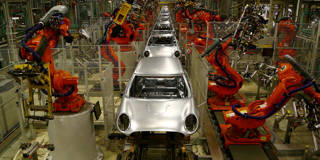
How COVID-19 Is Transforming Manufacturing
As the COVID-19 pandemic escalates, the advanced economies seem to be geared up for a manufacturing renaissance. But while this may reduce risks for large firms, it probably will not benefit very many advanced-economy workers, let alone the developing countries from which production is being shifted.
MUNICH – As the COVID-19 pandemic escalates, the risks inherent in global supply chains are more apparent than ever. Rather than await a return to business as usual, with manufacturing activities concentrated in countries where labor is cheap and plentiful, advanced-economy companies are shifting their focus to the lowest-wage workers of all: robots.